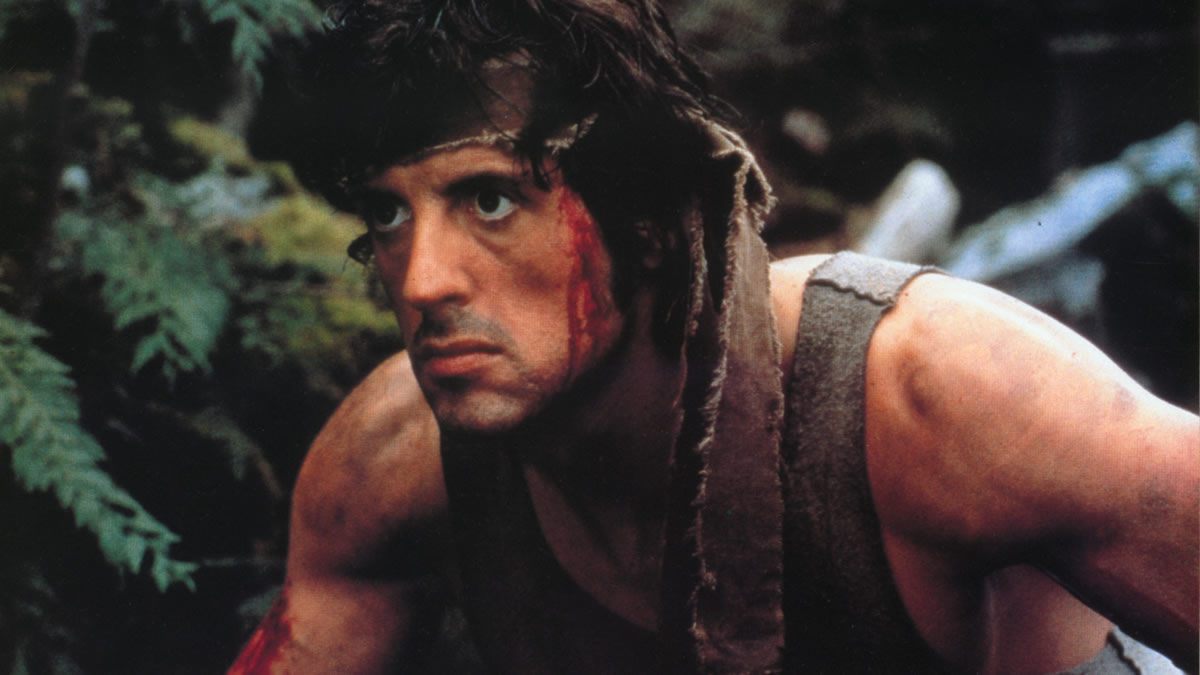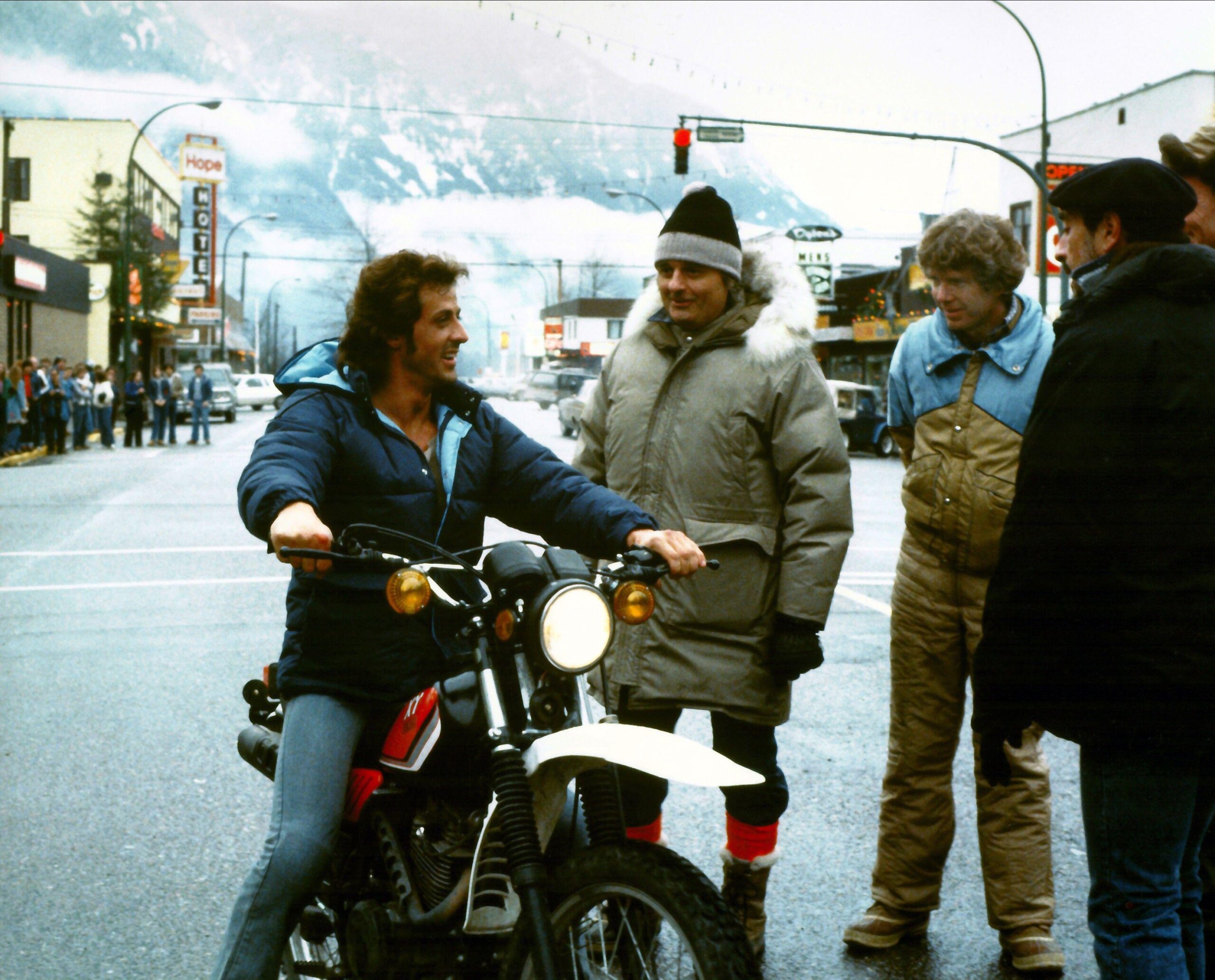An arsenal “large enough to start a small-scale war.” These words from The Province could have just as easily referred to the variety of genuine firearms used by John Rambo in First Blood. The film launched a blockbuster franchise for its star Sylvester Stallone and put the B.C. town of Hope on theatre screens across the world. But on Tuesday, January 26, 1982, First Blood was making news for the shocking robbery of restricted firearms from the film’s North Shore set. The “Rambo robbery” was just one misadventure in the film’s troubled production, including storms, injuries, script problems, and even an animal rampage.
In the pages of Ontario-born author David Morrell’s 1972 novel, John Rambo is described as “some nothing kid,” a traumatized Vietnam vet who launches a guerilla war against law enforcement led by Kentucky sheriff Will Teasle. Young, long-haired, and bitter at the treatment of returning soldiers, Rambo was meant to represent the disaffected, according to Morrell’s introduction to his novel. After killing a police officer, Rambo employs the same skills he used overseas to kill and elude the authorities, leading to a final showdown with Teasle. In Morell’s novel, “escalating force results in disaster,” and both men end up dead. Though bleak, the novel was a bestseller and critically acclaimed: when Stephen King taught writing, First Blood was one of only two novels he assigned.
In addition to changing the setting from Kentucky to the Pacific Northwest—represented onscreen by Hope, B.C., and other neighbouring areas due to its milder winters and Canadian tax credits—Canadian director Ted Kotcheff (The Apprenticeship of Duddy Kravitz) and screenwriters Michael Kozell and William Sackheim turned Morell’s morally grey and ultraviolent novel into a more standard action film. “My intent was to transpose the Vietnam War to America,” Morrell writes in his introduction to the novel. “In contrast, the film’s intent was to make the audience cheer for the underdog.” Stallone personally petitioned to remove Rambo’s suicide from the film’s climax. The Oscar-nominated screenwriter of Rocky rewrote the ending himself so that Rambo delivers a monologue about his frustrations since coming back from the battlefield before he turns himself in alive. “I did 20 interviews with veterans, and I compiled it into that moment, all stream of consciousness, with everything just pouring out,” Stallone said of the climactic speech. “I want people to take away some sense of hope when they leave the theatre. I don’t want my heroes to die.”
“It’s virtually impossible to make a war movie without weapons,” B.C. ‘s director of firearms and special services Lorne Newson told The Province. To arm Rambo and his adversaries, the film’s production company leased an arsenal from a Los Angeles armourer, including two M60 machine guns, 14 M16 carbines, 11 AR-15 semiautomatic rifles, a tear gas launcher, and various other rifles, pistols, and shotguns. The permits Newson issued mandated that the restricted rifles be modified to shoot only blanks. The weapons were stored in a locked wooden case inside a five-ton truck parked near the Cleveland Dam, on a site guarded by members of the Canadian military who were also playing extras in the film.
On the morning of Saturday, January 23, the prop supervisors went to check on the guns, but they were gone.
Masterful burglary or inside job? The RCMP investigators found no forced entry to the padlocks and combination lock on the truck’s doors. The thieves had taken only the real weapons, leaving the replica guns behind. While the official number of stolen firearms was given as 47, The New York Times reported that “someone close to the production insists that nearly 100 guns were taken.” While the rifles had been modified, an RCMP spokesperson admitted that “a relatively minor operation would make most of them fully operative again,” and the stolen shotguns and revolvers could fire live ammunition. Such an arsenal, valued at $50,000 at the time, would be “enough to start a small-scale war and would bring a high price from criminals,” The Province reported.

Sylvester Stallone as John Rambo in First Blood.
Shortly before Christmas 1984, three men from Coquitlam and Vancouver were charged with the theft. All three were reservists of the British Columbia Regiment (described in The Sun as “the Canadian militia”). Fifteen of the weapons were recovered, including the two heavy machine guns. A month later, North Vancouver RCMP officers recovered more of the stolen weapons from a Richmond slough near the Vancouver Airport.
In May 1985, the ringleader of the heist, Richard Edward Gallant, was sentenced to 18 months in prison and ordered to pay the film’s insurance company $2,500. Gallant also admitted to the theft of computer equipment from Simon Fraser University in 1984. His accomplices in the weapons theft, Douglass Burgess and John Krahn, received lighter sentences and fines.
The robbery was only one of the setbacks the production suffered. Despite changing the location to the temperate Pacific Northwest, freak storms delayed shooting. While performing a stunt in which Rambo jumps off a cliff, Stallone broke a rib when he hit a tree branch—his pained reaction is visible in the finished film. While being transported to the set from the Vancouver Game Farm, a wild boar named Porky battered open his cage and ran amok, causing a traffic jam in Burnaby. Porky “did about three rolls and then started walking for home into the oncoming traffic,” Porky’s owner Hugh Oaks told The Province.
First Blood was a financial success, and its bloodier and more jingoistic sequel, Rambo: First Blood Part II, became the 17th-highest-grossing film of the 1980s. To date, the Rambo franchise includes five films, as well as several video games and even a children’s cartoon. Though Rambo didn’t survive in his original novel, Morrell himself wrote the novelizations of the second and third films. Today, wood-carved statues of Stallone’s Rambo and Brian Dennehy’s Teasle adorn the streets of Hope, which regularly celebrates the film with screenings and a walking tour. In a 2022 interview with The Hollywood Reporter, Stallone teased that a new Rambo project was “getting close.”
Despite its troubled production, First Blood became a classic action film and one of the best-known films ever shot in B.C. The robbery of nearly 50 firearms (or allegedly even more) from the First Blood film set ended with all but four of the weapons recovered and the perpetrators facing justice—an ending with a “sense of hope” that Stallone might approve of.
Read more film stories.









